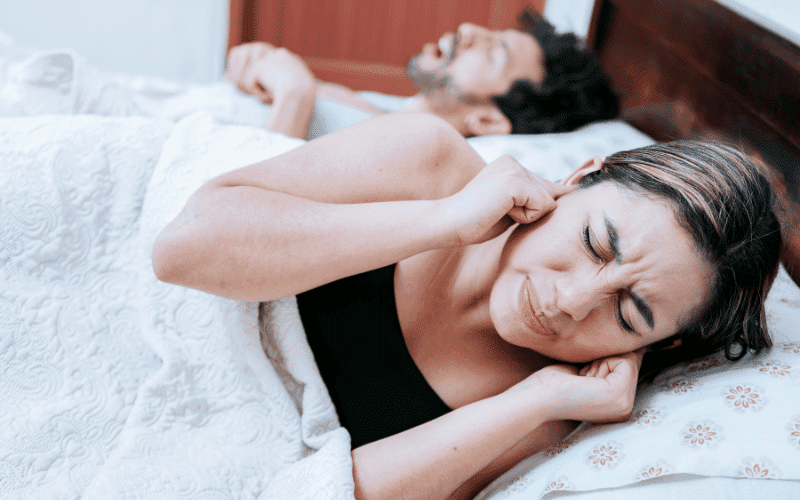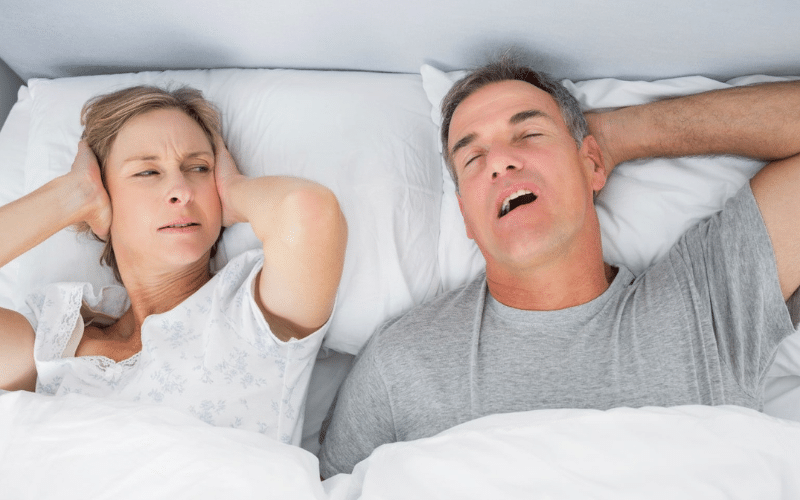ONLINE SCHEDULING AND VIRTUAL CONSULTS AVAILABLE

Symptoms of Sleep Apnea & When Is Surgery Necessary?

Sleep apnea is a prevalent sleep disorder characterized by pauses in breathing or shallow breaths during sleep. These interruptions in breathing can occur multiple times throughout the night, leading to fragmented sleep and various health complications. It is essential to recognize the symptoms of sleep apnea and understand when surgical intervention may be necessary to effectively manage the condition.
The two primary types of sleep apnea are obstructive sleep apnea (OSA) and central sleep apnea (CSA). Both types can significantly impact an individual’s quality of life and overall health. In this blog, we will explore the symptoms of sleep apnea, diagnostic procedures, non-surgical and surgical treatment options, and when surgery may be recommended for optimal management. Understanding these aspects of sleep apnea in Plantation can help individuals recognize the importance of seeking timely intervention and improve their overall well-being.
What Is Sleep Apnea?
Sleep apnea is a sleep disorder characterized by pauses in breathing or shallow breaths during sleep. These interruptions in breathing can occur multiple times throughout the night, leading to fragmented sleep and various health complications. Sleep apnea can significantly impact an individual’s quality of life, contributing to daytime fatigue, irritability, and an increased risk of accidents due to impaired cognitive function.
Types of Sleep Apnea
Obstructive Sleep Apnea (OSA):
- OSA occurs when the throat muscles relax excessively during sleep, causing the airway to become blocked or narrowed.
- Symptoms include loud snoring, choking or gasping during sleep, and daytime fatigue.
Central Sleep Apnea (CSA):
- CSA results from a malfunction in the brain’s respiratory control center, leading to irregular breathing patterns during sleep.
- Symptoms may include pauses in breathing, difficulty initiating or maintaining sleep, and morning headaches.
Mixed or Complex Sleep Apnea:
- Mixed sleep apnea, also known as complex sleep apnea, involves a combination of obstructive and central sleep apnea patterns.
- Diagnosis and treatment may vary depending on the predominant symptoms and underlying causes.
Symptoms of Sleep Apnea
Sleep apnea can manifest through a variety of symptoms, some of which are more apparent while others can be subtle. Recognizing these symptoms is crucial for early diagnosis and effective intervention. The most common signs include loud snoring, daytime fatigue, and gasping for air during sleep. These symptoms can significantly disrupt daily life, leading to impaired cognitive function, mood changes, and decreased overall quality of life.
Loud Snoring: This is one of the hallmark symptoms of obstructive sleep apnea (OSA). It occurs when the airflow is partially blocked, causing vibrations in the throat tissues.
Daytime Fatigue: Individuals with sleep apnea often experience excessive daytime sleepiness. This is due to the fragmented sleep pattern caused by frequent awakenings during the night.
Gasping or Choking During Sleep: Many people with sleep apnea wake up suddenly, gasping or choking for air. This is a result of the airway collapsing and the brain signaling the body to wake up and breathe.
Morning Headaches: Frequent morning headaches can be a sign of sleep apnea. These headaches are typically caused by decreased oxygen levels during sleep and the strain on the cardiovascular system.
Dry Mouth or Sore Throat: Waking up with a dry mouth or sore throat is another common symptom. This occurs because individuals with sleep apnea often breathe through their mouths during sleep.
Irritability and Mood Changes: Sleep apnea can lead to mood swings, irritability, and even depression. The lack of restorative sleep affects the brain’s ability to regulate emotions and stress.
Difficulty Concentrating: Cognitive impairments such as memory problems and difficulty concentrating are also associated with sleep apnea. The repeated awakenings disrupt the sleep cycle, preventing deep, restorative sleep stages.
Diagnosis of Sleep Apnea
Diagnosing sleep apnea involves a series of procedures designed to identify the severity and type of the disorder. Accurate diagnosis is essential for developing an effective treatment plan tailored to the patient’s specific needs. Healthcare professionals play a crucial role in this process, utilizing various diagnostic tools and methods to assess the condition thoroughly.
- Sleep Studies (Polysomnography): This comprehensive overnight test monitors several physiological parameters, including brain activity, eye movements, muscle activity, heart rate, and breathing patterns. It is considered the gold standard for diagnosing sleep apnea.
- Home Sleep Apnea Testing (HSAT): For some patients, a home-based test may be recommended. This test measures breathing patterns, oxygen levels, and heart rate while the patient sleeps at home, providing valuable data for diagnosis.
- Healthcare Professional Evaluation: A thorough evaluation by a sleep specialist or healthcare provider is essential. This includes a detailed medical history, physical examination, and assessment of symptoms to determine the likelihood of sleep apnea.
- Questionnaires and Screening Tools: Tools like the Epworth Sleepiness Scale and STOP-BANG questionnaire help identify individuals at risk for sleep apnea and determine the need for further testing.
- Follow-up Consultations: Regular follow-ups with healthcare providers ensure that the diagnosis is accurate and that the treatment plan is effective. These consultations also address any concerns or adjustments needed for ongoing care.
When Is Surgery Necessary?
Surgery for sleep apnea is typically reserved for cases where non-surgical treatments have proven ineffective or when the condition is severe and poses significant health risks.
Indications for Surgery
- Persistent symptoms despite non-surgical interventions.
- Severe obstruction of the upper airway.
- Intolerance or non-compliance with CPAP therapy.
Factors Influencing the Decision
- Severity of symptoms: The degree of daytime sleepiness, loud snoring, and interruptions in breathing during sleep.
- Response to non-surgical treatments: Whether CPAP therapy or oral appliances have provided adequate relief.
- Anatomical considerations: Structural abnormalities in the upper airway that contribute to breathing obstructions.
Importance of Individualized Treatment Planning
- Each patient’s condition is unique, and treatment decisions should be tailored to their specific needs.
- Shared decision-making between patients and healthcare providers ensures that treatment goals align with patient preferences and lifestyle factors.
Overall, surgery for sleep apnea is considered when other interventions have been unsuccessful, and the benefits outweigh the risks for the individual patient.
Understanding the symptoms and treatment options for sleep apnea is crucial for effective management. Whether opting for non-surgical interventions or considering surgical options, it’s essential to seek professional guidance and personalized care. With timely diagnosis and appropriate treatment, individuals can significantly improve their quality of sleep and overall well-being.





